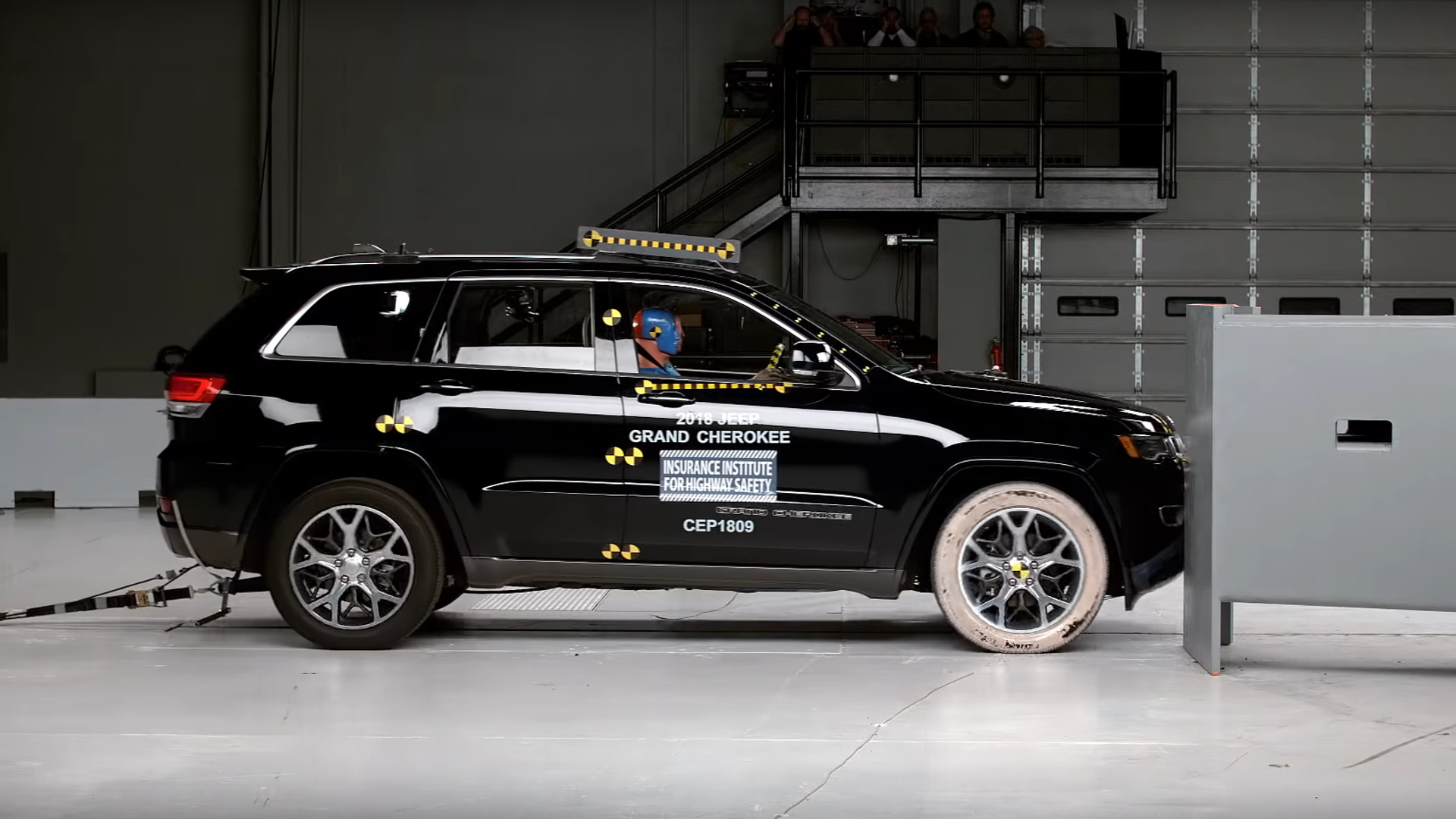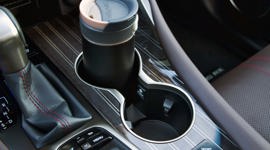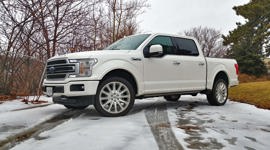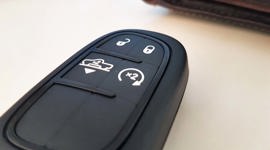The Insurance Institute for Highway Safety's latest round of crash testing switches things up. This time it's a passenger side test for the midsize SUV pack, and while there were a few problems, most earned an acceptable or good rating.
The IIHS is an independent insurance industry-backed group that performs safety testing on cars and light trucks. Their offset front crash test is the one you're most likely to see in videos online, but they have expanded testing over the years to include more types of impacts and even headlight tests. Most recently they've moved to the passenger side of the car. Previous testing focused on the driver's side since that's where most impacts occur. Since last year, they have begun performing the small overlap test on the passenger side. It simulates a striking blow when just the front passenger corner strikes another vehicle or an obstacle like a tree or utility pole.
"Although some vehicles in this group offer very good protection, in other models, the airbags, safety belts and structure showed serious deficiencies," said IIHS Chief Research Officer David Zuby. "In those SUVs, a front-seat passenger would be at risk of injuries to the head, hip or leg in a right-side small overlap front crash."
This test was of eight midsize crossovers, all 2018 model year, with the exception of the 2019 Kia Sorento. The Sorento was one of three to receive a "good" rating, which is the top mark in the test. It was reinforced for this year to improve passenger safety. The IIHS reported a maximum intrusion of 102 mm on the right side of the footwell and said the test dummy was well restrained. It's the only one from the test to get a Top Safety Pick+ award, which uses scores from all of the IIHS crash tests as well as the lighting test.
The GMC Acadia and Volkswagen Atlas both also earned a good rating. The Acadia was called out because the passenger dummy's head slid off the side of the airbag. That could leave the passenger vulnerable to contact between their head and the forward structure of the crossover.
Other crossovers didn't fare as well in the testing. The Ford Explorer rated poor in the test, the worst rating. The IIHS said that the structure was seriously compromised. There was a 381 mm intrusion at the lower door hinge and 330 mm at the upper hinge and dashboard. That intrusion is where the vehicle body and structure has been pushed back into the passenger compartment. When the vehicle's structure ends up in the passenger compartment, the likelihood of injury is greater.
The test report said that the dummy "showed a high likelihood of injuries to the right hip in a real-world crash of the same severity, as well as a possibility of left lower leg injuries." The IIHS noted that Ford says the Explorer is due for a redesign, with improved offset front protection on both sides. The current fifth generation Explorer has been on sale since 2011, with the sixth generation expected to appear next year as a 2020 model.
The Jeep Grand Cherokee had 254 mm of intrusion at the lower hinge. The IIHS said that the dummy's head hit the dashboard through the front airbag, and then because of a side curtain airbag that didn't deploy and a door that came open, the dummy's head moved outside the vehicle. The passenger could be ejected in a crash. Test measures said that right leg injuries were likely and that a head injury was possible.
The Toyota Highlander, Nissan Pathfinder, and Honda Pilot all scored acceptable, the second highest rating. The IIHS said that the Pilot dummy's head struck the dashboard hard, which lead to that crossover's score. None of the eight tested rated as marginal.







